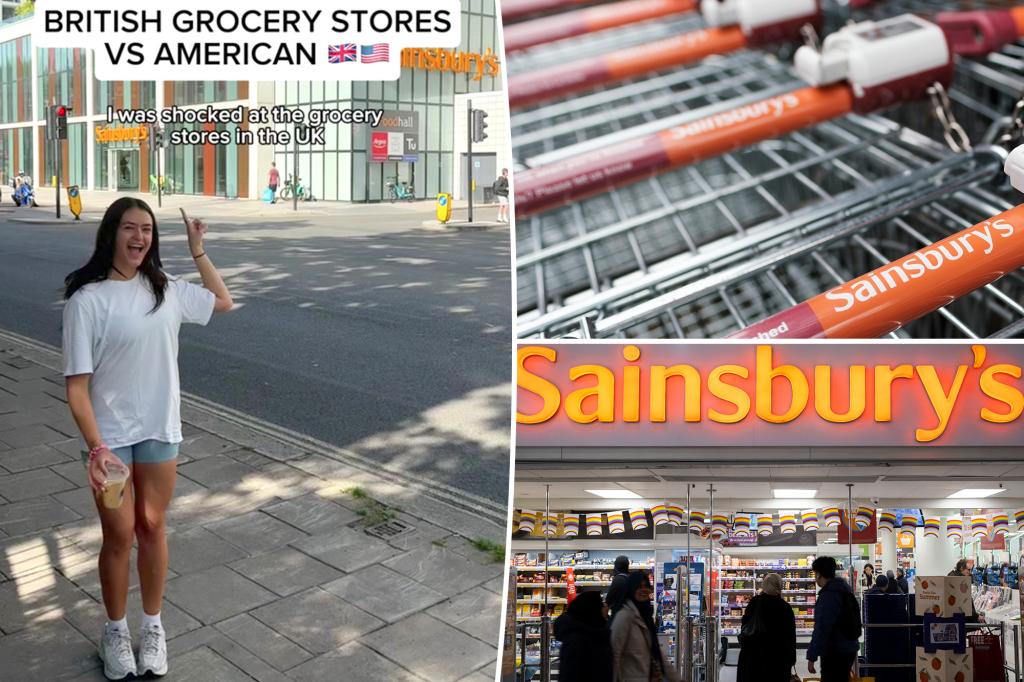How Supermarkets are Innovating Shopping Experiences Across Borders
In a digital age where cross-cultural experiences are shared instantly, an American expatriate’s bewildered reaction to UK grocery shopping has captured widespread attention online. The viral TikTok video, which has garnered over 155,000 views, documents @nataliebarbu’s cultural shock upon discovering one of Britain’s most common supermarket practices: coin-operated shopping carts. During her visit to Sainsbury’s (which she likened to America’s Walmart), she found herself puzzled by the requirement to insert a one-pound coin to unlock a shopping cart—a deposit returned only when the cart is properly replaced. This simple mechanism, while unfamiliar to many Americans, represents just one example of how supermarkets worldwide are implementing different systems to encourage more considerate shopping behaviors and tackle everyday inefficiencies.
The coin-operated cart system exemplifies a thoughtful solution to a universal supermarket frustration. UK viewers quickly explained that this practice isn’t about generating revenue but rather promoting customer responsibility. In the United States, abandoned shopping carts scattered throughout parking lots are a common sight despite designated return areas. The UK’s approach elegantly solves this problem through a small financial incentive—shoppers who return their carts get their deposit back, while those who abandon them forfeit their coin. This small accountability measure has effectively transformed shopping behavior across the UK, creating tidier parking lots and reducing the workload for employees who would otherwise spend considerable time collecting stray carts. Though it seemed foreign to the TikToker, this concept isn’t entirely absent in America—Aldi USA has imported this European practice with its “Quarter In, Quarter Back” system, demonstrating how successful international retail practices can cross borders.
While coin-operated carts represent one approach to improving the shopping experience, American supermarkets are pioneering their own innovations focused on technological advancement. Wegmans, a prominent Northeast grocery chain, has begun testing Instacart’s AI-powered “Caper Carts” at locations in upstate New York. These smart shopping carts automatically recognize items as customers place them inside, allowing shoppers to track spending in real-time and bag groceries as they move through the store. This represents a different philosophy toward enhancing the customer experience—while the UK system encourages consideration for employees and other shoppers through accountability, the American approach emphasizes convenience and efficiency through technology. Both methods reflect cultural values and address different pain points in the retail experience, showing how supermarkets adapt their innovations to local expectations and challenges.
The conversation sparked by this cultural comparison reveals how everyday activities like grocery shopping can illuminate deeper differences in consumer behavior expectations across countries. The comments section of the original TikTok video became a fascinating forum for international exchange, with viewers highlighting additional differences between American and British supermarket experiences. One commenter playfully asked if the American visitor had noticed another British cart innovation: wheels that can move sideways as well as forward and backward, allowing for easier navigation in tight spaces. These observations showcase how even the most mundane aspects of shopping reveal cultural ingenuity and different approaches to solving universal problems. They also demonstrate how social media has become a powerful platform for cultural exchange, allowing people to learn about and appreciate different approaches to everyday activities.
What makes these cross-cultural comparisons particularly valuable is how they challenge us to question practices we take for granted. Many Americans might never have considered why free shopping carts lead to parking lot abandonment, while British shoppers might not realize how their coin-deposit system appears to visitors. Similarly, the high-tech smart carts being tested in American stores might seem unnecessarily complex to shoppers accustomed to simpler systems that work effectively. These contrasts invite consumers and retailers alike to consider whether certain innovations truly enhance the shopping experience or simply solve problems in ways that align with regional expectations. The ideal supermarket experience likely incorporates elements from various approaches—combining the accountability measures popular in Europe with the convenience-focused technologies being developed in America.
As global retail continues to evolve, these international exchanges of ideas will likely accelerate innovation in supermarket experiences worldwide. The viral nature of @nataliebarbu’s observation demonstrates public interest in understanding different approaches to everyday activities across borders. Forward-thinking retailers might consider adopting hybrid models that incorporate the best aspects of various systems—perhaps smart carts that also require coin deposits, or other innovations that balance convenience with responsibility. What’s clear is that supermarkets everywhere are actively seeking ways to improve the shopping experience, whether through simple mechanical solutions like coin-operated carts or sophisticated AI-powered technologies. These efforts reflect a universal desire to make necessary activities like grocery shopping more efficient, pleasant, and considerate for everyone involved. As consumers become increasingly global in their outlook, their expectations may drive further convergence of these different approaches, creating shopping experiences that draw from the best practices worldwide.


